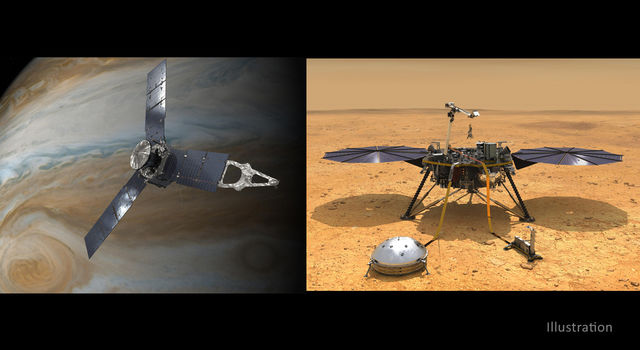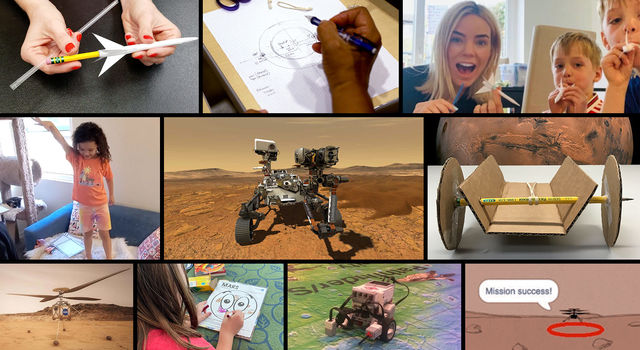Blogs | JPL | July 17, 2008
Water Ice and Soil Samples on Mars
We've been steadily learning about what it takes to run this thing called the Phoenix lander. As expected, not everything has gone exactly as planned. But that in its own way was planned -- we work to maintain flexibility in our schedule and our design, so that we can absorb new things that happen without throwing the whole team into a tizzy! So what have we been doing?
The Robotic Arm Camera on Phoenix captured this image underneath the lander on the fifth Martian day of the mission. The abundance of excavated smooth and level surfaces adds evidence to a hypothesis that the underlying material is an ice table covered by a thin blanket of soil.
The wet chemistry experiment in one of the lander's instruments called the Microscopy, Electrochemistry and Conductivity Analyzer, or MECA, also found salts in the soil samples. Salts are only formed when water has been present! So that is another indicator that there was abundant water in this region of Mars. What are these salts? They appear to be chemicals containing sodium, magnesium, potassium and chlorine. The soils were found to be alkaline, with a pH greater than 7 -- similar to soils in the upper dry valleys of Antarctica.
But, like I said, everything hasn't been totally smooth. The team discovered that the Martian soil is lumpy and sticks together. That made the first sample difficult to deliver! So the team thought about how to make the process easier, and we figured out various ways to break up the lumps. We tried three methods: de-lumping, sprinkling and agitation.
De-lumping refers to shaking the acquired material in the scoop by running a Dremel-like tool that vibrates the entire scoop, breaking up clumps. Then there is sprinkling: By running the rasp while slightly tipping the scoop, the team can command Phoenix to send a small shower and sift particles down into the TEGA (Thermal and Evolved-Gas Analyzer ) and MECA instruments rather than dumping a whole load of clumped-up dirt onto each instrument. As for agitation, the TEGA instrument has a method to shake itself -- it has an agitator which shakes the sample loose if anything has stuck to its entry port. The sprinkle and agitation methods have been routinely adopted for sample delivery.
The neat consequence of this is that it solves what had always been our worry about how to deliver the same sample to each instrument for comparison of science results. The sprinkle delivery method enables us to put a large sample into the scoop and deliver part of it to MECA microscopy, part to MECA wet chemistry and part to the TEGA instrument. Same sample problem: solved!!
When life gives you lemons, make lemonade! Or in this case, Marsade!
TAGS:PHOENIX, MARS, SOLAR SYSTEM, MISSION, SPACECRAFT, LANDERS & ROVERS










